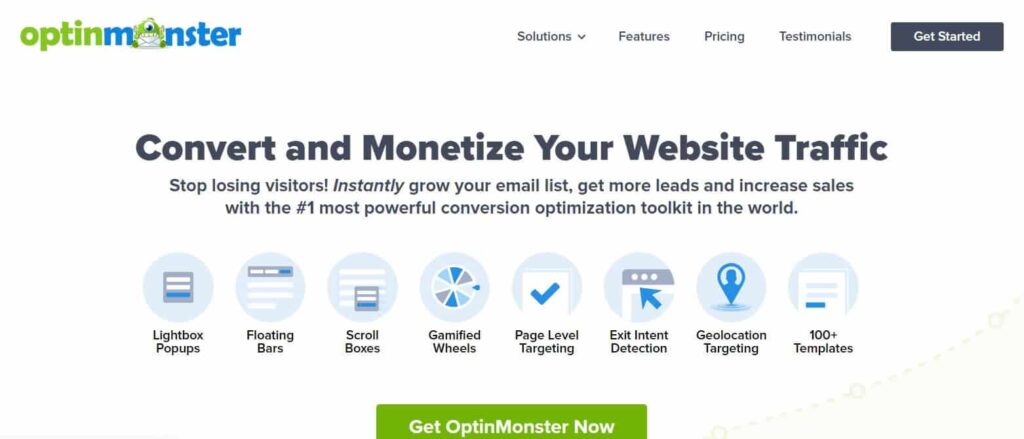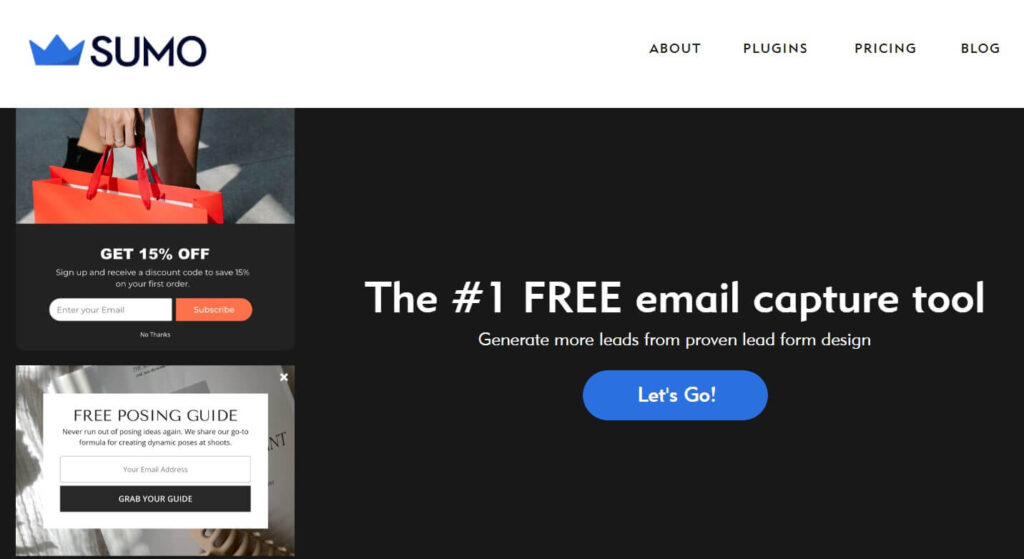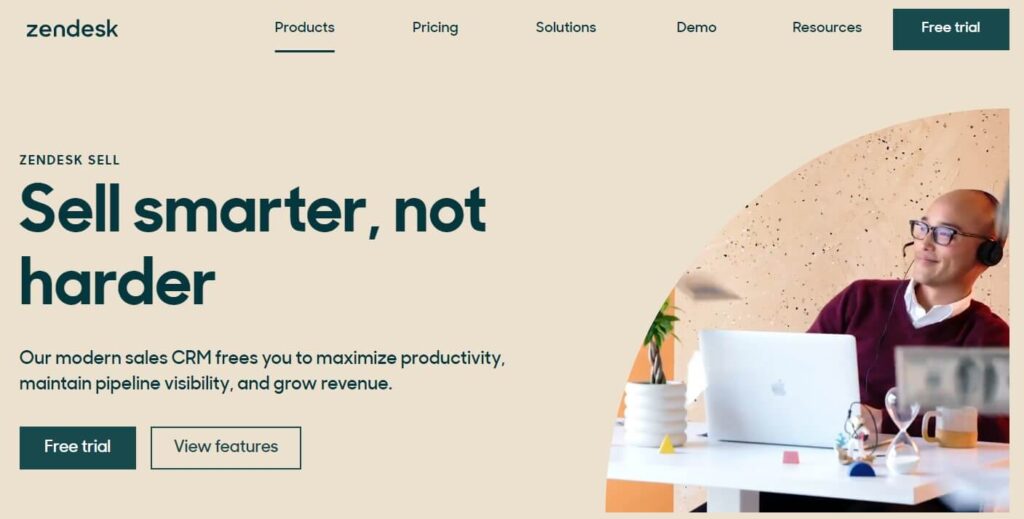For most small businesses, lead generation is not just an element of marketing; it is a matter of survival. The more clients a company has, the greater the amount of activity that takes place. This not only increases sales for a company; it also strengthens its presence in the market. And customer feedback further serves to strengthen the company’s reputation, increasing brand recognition in this way.
These companies often lack a significant established client base or large marketing budgets. As a result, due to a lack of resources, a small company must take a more strategic approach to lead generation. Lead generation strategy needs to focus on more focused and cost-effective activities.
Modern and innovative technologies become crucial here, including AI.
Understanding Lead Generation for Small Businesses
Small business lead generation is the process of identifying potential customers and nurturing them towards making a purchase that will sustain the business’s operations. Small businesses face unique lead generation challenges due to their financial constraints, poor economies of scale, and resource limitations. Therefore, they need a more targeted, selective, and cost-effective approach that emphasizes quality leads and cost-effective conversion processes.
Since they must use direct contact and relationship building to identify leads, they can also exploit existing resources optimally, including innovative technologies like AI. These tools facilitate automation, personalization, and data analysis for small businesses that want to exploit their lead generation investment to remain competitive.
Challenges Faced by Small Businesses in Lead Generation
Common Challenges
- Typical Obstacles Restricted Budget. Small businesses usually have limited funds, which makes it hard for them to spend in costly advertising platforms or comprehensive marketing campaigns that larger companies might use.
- Lack of professional Staff. Hiring professional marketing teams is not always an option for small firms. Their inability to effectively create lead generation tactics and analyze market data may be a result of this lack of experience.
- Reduced Market Scope. Small firms typically find it difficult to expand their market reach due to their lack of a significant client base or well-known brand, which limits their visibility to possible new leads.
Particular Difficulties
Apart from the typical difficulties, small enterprises encounter particular barriers when trying to set up a strong lead generation system:
- Resource Allocation. Small firms may find it especially difficult to strike a balance between short-term operational requirements and long-term expansion plans like lead generating. They frequently have to put immediate survival ahead of long-term planning.
- Adapting to Technology. Small businesses may find it difficult to stay up with the latest tools and platforms that enable lead generation due to the quick speed of technological change.
- Establishing Credibility and Trust. Small businesses that don’t have a well-known brand name have to put in more effort to establish credibility and trust with prospective clients, which is essential for turning leads into sales.
Overcoming Challenges with AI
AI is an efficient and effective way to do more with significantly less and, in the case of small leads, to generate more high-quality leads with less effort, money, and skilled workers. AI can automate time-consuming tasks to handle many aspects of the lead generation process.
Data analysis automation and even customer interaction reduce the handling of subcontractors and generate leads more effectively. AI can further enhance this process, ensuring that their leads are nurtured and transformed without the need for constant input.
For example, AI, aided by, among other technologies, chatbots, programmed to deal with clients around the clock, can predict and meet the needs and deliver faster than customers. Small AI companies, thus ensuring that it stays up to speed and allows them to scale their lead generation systems more effectively, thereby devoting more resources to the new aspects of the business and expanding.
Developing a Lead Generation Strategy: Step-by-Step
- Establish Your Objectives. To begin, decide what you hope to accomplish with your lead generating campaigns. Are you trying to build your email list, boost sales, or raise awareness of your brand? Having specific, quantifiable goals can help you stay on course and assess your progress.
- Recognize Your Audience. It’s critical to identify your target clientele. To better target your messaging and identify the most effective ways for reaching people, conduct demographic, behavioral, and preference research.
- Choose the Appropriate Channels. Select the most efficient channels for your lead generation efforts based on your target audience. Social media, email, your website, and even offline events may fall under this category.
- Produce Captivating Content. Write articles that speak to your target market and entice people to interact with your business. This could be accomplished through informative blog entries, webinars, films, or other materials.
- Put Automation and Efficiency Tools into Practice. Get insights from your data and automate tedious operations with artificial intelligence (AI) and other digital tools. This can include chatbots, email marketing platforms, and customer relationship management (CRM) systems, among other things.
- Start and Keep an Eye on. Launch your campaigns and keep a careful eye on their effectiveness. Analyze your progress toward your objectives using analytics, and change as necessary.
- Optimize and Iterate. Make constant improvements to your strategy based on the data gathered. Try out various approaches to discover which ones perform best, and be prepared to adjust your plan in response to changes and input from the market.
Real Example Lead Generation Strategies
1. Blooms & Bees: Targeted Social Media Campaigns
- Strategy: Blooms & Bees, a small florist shop, launched a targeted social media campaign on Instagram and Facebook, focusing on special occasions and floral arrangements.
- Results: The campaign generated a 30% increase in orders and a 45% increase in page followers over three months.
- Analysis: By targeting users based on their interests and upcoming events like birthdays and anniversaries, Blooms & Bees effectively reached potential customers at the moment they were most likely to need floral services. The visually appealing content also encouraged shares and likes, further amplifying reach.
2. TechAdvantage: SEO and Content Marketing
- Approach: TechAdvantage, a little tech business, concentrated on search engine optimization and wrote in-depth blog articles that addressed particular tech-related queries.
- Outcomes: In just six months, this strategy increased organic website traffic by 50% and lead conversions by 20%.
- Analysis: TechAdvantage’s success may be attributed to the high-quality material they produced, which catered to the particular requirements of their target market and raised their search engine ranks while generating more qualified leads. By directly answering consumer questions, the content established the brand as an authority on tech devices.
3. HealthFirst Clinics: Localized PPC Advertising
- Strategy: HealthFirst Clinics utilized Pay-Per-Click (PPC) advertising with a focus on local keywords and included a strong call to action for free initial consultations.
- Results: They saw a 40% increase in clinic appointments and a 25% increase in website inquiries from the ads within the first four months.
- Analysis: HealthFirst Clinics’ success came from highly targeted local advertisements that captured the attention of potential patients searching for immediate healthcare solutions in their area. The offer of a free consultation acted as a strong incentive to encourage clicks and conversions from the ads.
11 Proven Lead Generation Strategies for Small Businesses
1. Cold Outreach

Cold outreach means sending email or message to potential leads, without any previous engagement, interaction. This type of campaigning could result in high conversion rates, but only if the email has the same object of interest or a common factor to the target involvement. The most crucial factor related to the success of cold outreach is the level of preparedness and making the email as personal as it gets. If the business spent enough time researching the potential customer and creating a strong opening line and statement that presents a solution to an existing problem, this might offer a high response rate.
Read also – Top 10 Outbound Sales Email Templates & Examples for Outreach
2. Newsletter
The newsletter is a lead generation that uses a strategic approach. It involves building a subscription base to which you can send updates, insights, offers, and anything else directly via email. This maintains your brand at the top of the consumer’s mind over time, slowly but increasingly fostering a relationship of loyalty and repeat loyalty.
Your dispatch will only be as appealing as your content, and the better the paperwork, the more likely individual consumers are to open it and engage with each transmission. Making the material exclusive or giving your audience a sneak peek can certainly help enhance its attractiveness and sign-up rate, producing a community of strong loyalists and followers around your brand. This is true for maintaining a healthy open and interact rate.
3. Relevant Blog Posts
As a small business, you can generate leads by creating relevant blog posts that answer frequent customer questions. In addition to positioning your business as an expert within the industry, it also boosts search engine optimization and drives organic traffic to your site. If the content addresses the primary problems or needs of your target audience, you will attract visitors searching for solutions that you offer.
AI will take it further and analyze data to determine which questions are most frequently asked or topics are most discussed in your sector. Thus, use AI tools and ask AI companies for the ideal keyword and topic choice to optimize the post for a search engine, making it more prevalent and accessible for a larger audience. You will also receive feedback from AI about the performance of the content and overall enhanced content-centered strategies, and you will have a blog post that generates leads, and builds credibility and trust.
4. Guest Post on Other Relevant Websites
This strategy is a more direct way of expanding your small business’s reach through gaining access to already-established audiences. By creating content that is published on a popular blog or a site in your industry, you can target hundreds of thousands of potential customers that already have an interest in your products and services.
Furthermore, guest posting is one of the ways to build backlinks, one of the most critical ranking factors for SEO, while also vouching for the credibility of the host website. The benefit of this strategy for small business is based on the available trust and credibility of the host site that allows sourcing your expertise and forming relationships with the host’s audience.
AI assists in correctly selecting possible partners, based on responsiveness and topic relevance, creating content that appeals to demographic specifics, and collecting data regarding guest posts’ success in terms of traffic generation and lead generation.
5. SEO
Search Engine Optimization is one of the areas that are highly required for small businesses who want to expand their reach. By making the most of SEO strategies, they could achieve a high level of online visibility and attract more organic visitors to the company’s website. Namely, by inserting focus keywords in the content, building an appropriate website structure, and ensuring that the site is easily accessible from mobile devices, businesses have more chances to appear in the top five results in the search.
The more people view the site based on relevance, the more they find a possible solution to their problem by contacting the business. Furthermore, SEO is needed for small companies because it creates fair competition rules. At a minimum cost, less-known companies can appear in search results, sharing the target audience with a more promoted competitor.
AI can make SEO even more effective when implemented in the right way . It can identify search trends and get the best option for keywords, analyze the performance of the existing site’s keywords and help optimize what to write about.
6. Landing Pages
For small businesses, landing pages are one of the primary tools for converting site visitors into leads. These unique web pages have a focused and persuasive call to action, such as subscribing to a newsletter, download a free guide, or schedule a consultation.
This instrument works because it eliminates distractions and drives potential leads towards a single conversion point, simplifying the decision-making process significantly. Furthermore, small business accomplishments can benefit from the use of landing pages, allowing them to engage in a more focused marketing approach.
Whether that is having several landing pages for different marketing campaigns or for various audience segments to create an appropriate message and offer, AI can help. It can analyze users’ data, and based on their behavior, optimize pages, personalize content, and adjust calls-to-action dynamically in real-time to maximize conversion rates. A more targeted approach results in a better user experience and a more efficient use of marketing expenditures.
7. Pay-Per-Click (PPC) Advertising
Advertising Pay-Per-Click advertising is another critical small business strategy to quickly drive targeted traffic. By placing ads on a search engine, social media network, or other website, the business ensures that its content is shown to a specific audience actively looking for its product or service. PPC Marketing is successful because it is aimed at potential customers who have arrived through the customer’s own efforts.
By incorporating keywords, demographics, or user interest or intent, small businesses can target individuals who are most likely to make a purchase. For a small business, PPC also has the advantage of producing immediate results. Organic techniques may take some time to gain traction, but the small business can get its ideal audience interested quickly.
However, small businesses are less costly, as they only pay when someone clicks on their ad and are in full control of their budget. Small businesses can use AI to better optimize PPC campaigns that adjust bids and test ad copy and targeting tactics across hundreds of keywords and thousands of demographics and psychographics.
8. Social Media Marketing

Social media marketing is another excellent tool for small businesses to engage directly with potential customers. Regular business activity on platforms such as Facebook, Twitter, Instagram, and LinkedIn allows the business to form relationships and increase visibility on platforms where their audience is already present. The comparatively low cost of an expansive platform on which to advertise allows small businesses to present themselves to an extensive audience ready to spend the time and resources necessary to generate leads.
Social media marketing also doubles as customer service – in addition to attracting leads through engaging content, businesses can attract leads with comments and direct messages. When incorporating AI into social media marketing, data can provide insights into optimal posting times, which forms of content perform best, and even basic question response automation.
9. Video Marketing
Video marketing is another way for small businesses to capitalize on the visually engaging, dynamic form of content to capture and retain more attention. Videos are informative, interesting, and can compel potential customers to explore a small business solution, making this type of content thoroughly engaging for leads. Videos also convey more information in a more appealing manner and, as a result, help increase conversion rates and social media shares.
Small businesses can benefit from video-based content to differentiate themselves from the competition. Whether it is an explainer video, a demo of a product, a review from a client, or even a day in a life video within a company, video content is the best way to increase brands’ online presence and help illustrate it as well as market their solutions.
In fact, using video on landing pages can increase conversions by up to 80%, and including it in an email has been shown to increase click-through rates by 200-300%. AI technologies may boost the effectiveness as AI can be used to help businesses generate and place videos, optimize them for SEO, develop personalized video recommendations for viewers, and analyze performance metrics.
10. Offer Demos and Free Trials
Offering demos and free trials is an excellent lead generation strategy for small businesses, especially those operating in the software, technology, and service sectors. Essentially, suppliers provide potential consumers with samples of their products or services to give them a firsthand experience of the benefits and value proposition while reducing the perceived risk for the customer.
With a smaller business, giving a demo or free-trial opportunity is particularly effective because it enables the person to receive the product or service without making a significant financial commitment in the short or long run. It also increases the credibility of the services and the firm and demonstrates the confidence the business has in its offering. Furthermore, companies can also learn from feedback and improve the product before the general market launch.
11. Positive Reviews
Another crucial strategy for small businesses aiming to increase their credibility and generate viable leads is to leverage positive reviews. When shared on the business website or other promotional materials, customer testimonials serve as a strong indicator of trust for prospective clients who contemplate purchasing the business’s products or services. Given that the current digital climate makes it easier for customers to browse through reviews and testimonials, positive feedback can make an even bigger difference.
In terms of investment, positive reviews are a relatively inexpensive but potent strategy to boost the business’s reputation and enhance its marketing without adding significant costs. They can be added to the business website or promoted on multiple digital platforms, inducing the clients to feel that they can trust their potential partner. Moreover, positive reviews offer good social proof that a small business is a reliable and high-quality collaborator.
5 Best Lead Generation Companies and Tools for Small Busines
1. AnyBiz.io

The first and best choice for small businesses seeking to achieve the maximum results from their lead generation attempts is AnyBiz.io. In fact, AnyBiz.io is our premium AI-powered option designed for lead creation and marketing professionals who are tired of pulling their hair – instead, trust the principles, which consolidate everything they need to do under a single umbrella.
Key Features of AnyBiz.io
AI-Driven Sales Agents: AnyBiz utilizes sophisticated AI agents that conduct personalized, multi-channel outreach to potential customers. These agents tailor their interactions based on the prospect’s recent activities and interests, ensuring a highly personalized experience that is difficult to achieve with human agents alone.
Comprehensive Data Analysis: AnyBiz’s platform analyzes over 10,000 data points every hour, allowing it to learn and continuously optimize its strategies to improve performance and drive better sales outcomes.
24/7 Operation: The platform operates around the clock, providing outbound and inbound sales activities and brand awareness management without the downtime associated with human-operated systems.
High Deliverability with Pre-Warmed Email Accounts: AnyBiz ensures high email deliverability rates through the use of pre-warmed, encrypted email accounts, maximizing the efficiency of email campaigns.
Seamless CRM Integration: AnyBiz integrates seamlessly with existing CRM systems, enhancing data synchronization and workflow without disrupting current operations.
Multi-Language and Multi-Channel Capability: The tool engages potential customers in over 30 languages and operates across multiple channels including Email, LinkedIn, and Twitter, broadening the scope of campaigns and enhancing customer reach.
Automated Meeting Scheduling and Email Responses: AnyBiz automates scheduling and email classifications, reducing the manual effort required and allowing businesses to focus more on strategy and less on administrative tasks.
2. HotJar

HotJar is an effective tool that focuses on user input and behavior analytics. Through heatmaps, session recordings, and polls, it offers real-time visual data and insights on how users engage with your website. In order to increase lead generation efforts, small businesses can use this information to better analyze user behavior, identify areas for improvement, and optimize the user experience.
3. OptinMonster

With the use of targeted marketing efforts, OptinMonster is a well-known conversion optimization tool that helps companies expand their email list, produce more leads, and boost revenues. It has a drag-and-drop builder for making eye-catching pop-ups and opt-in forms, A/B testing, and behavior automation capabilities that run programs in response to user input and dramatically increase website conversion rates.
4. Sumo

Sumo provides a set of technologies aimed at improving lead generation and conversion for websites, including e-commerce platforms. Customizable pop-ups, welcome emails, and timed offers that aid in email address collection are important elements. Sumo makes it simple for small businesses to increase their subscriber lists and sales by integrating with websites to give discounts and incentives to visitors.
5. Zendesk

Zendesk offers a complete customer support solution that can be used to generate leads. It has tools that enhance customer interactions and assistance, like live chat, an AI-powered knowledge library, and ticketing systems. Zendesk contributes to the development of trust and happiness through improving customer service. These elements are essential for turning prospects into devoted clients and creating referrals.
Conclusion
This article has taken you through multiple lead generating strategies specifically designed for small businesses. While many practices are rooted in the past, they can revolutionize a business with the implementation of modern AI technology. This sophisticated tool allows your business to put complex processes on autopilot, gather attention-keeping customer interaction personalized and utilize vast data for your marketing needs. As a small business, it gives you the ability to scale your operations by achieving more with less.
Don’t hesitate to do the same by employing this article’s guidance and experiment with the AI or AI-enhanced lead generation strategies. AI can help you design new email campaigns, revolutionize your social nets marketing and make your customer feedback analysis genuinely useful.
AnyBiz.io offers cutting-edge AI-driven solutions designed specifically to enhance and streamline your lead generation processes.
Visit AnyBiz.io today to learn more about how our solutions can be customized to fit your business needs and start your journey towards smarter, more effective lead generation.
Related article:


